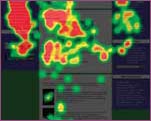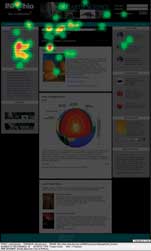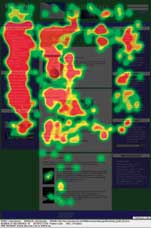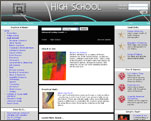 SiteSource
SiteSource
"Best of Web"
Searches
Results from high-quality, certified Web sites hand-picked by teachers and librarians. Search databases at the same time
and find related articles. Learn more
about BOW.
Explore More...
 News & Events
News & Events
Catch up on the news about SchoolRooms. Check out the next place you can see SchoolRooms in action and find out more about how SchoolRooms can provide your students with an unparalleled learning experience.
Discover More...
 Case Study:
Case Study:
Boston Public Library
Discover how Boston Public Library is using SchoolRooms to create an interactive experience for patrons. From teachers to parents, from high school students to elementary students, SchoolRooms is the "go to" site for K-12.
Read the case study on BPL.
Learn More...
Why Students Like SchoolRooms™ : Usability
From January through March 2006, the prototype version of SchoolRooms™ was released to approximately 1,000 students in the Shaker Heights School District in Cleveland, Ohio. These students not only used SchoolRooms to help with homework and other tasks, they also participated in formal, structured usability tests designed and supervised by experts from Kent State University.* For these tests, students were asked to conduct specific searches and other tasks, while being timed and videotaped.
In addition, a sub-set of students were 'eye-tracked.' This technology 'tracks' eye movements to determine what strategies students use to find the information they are looking for. By combining the tracks of multiple users, it is possible to create 'heat maps' for different levels of students which show how they use SchoolRooms.
Comparing the heat map for elementary school students with the heat map for high school students, it is clear the older students are very goal-oriented: they go immediately to the taxonomy or the search box to drill down and find the information they seek. Elementary school students behave differently. They "look around" at everything. In fact, the elementary students did not even rate the search feature (the only group that did not).
Why is this important?
It tells us that educators, librarians, and organizations designing K-12 technology solutions must approach students differently at different levels. Because high school students know how to find the information they are looking for, the content on each page does not have to be core material - it can be related content designed to make the subject more interesting or to provide greater depth to the topic. For elementary students, on the other hand, the content presented needs to be core content because that may be all the students see.
High School
At left is the heat map for the high school students. Very clearly, this group goes directly to the search box or drills down through the taxonomy in the upper left of the screen (this is where all major Web sites locate taxonomic navigation). High school students will glance at featured content. But they will not spend much time on it, and they never explore 'beneath the fold.' For high school students, SchoolRooms focuses on putting eye-catching content front and center to lead the student deeper into the topic.
Elementary School
Elementary students look around the entire page. They are not looking for something in particular - just the opposite. They look at everything. For elementary school students, core content must be featured because they may not drill down any further.
Discover More...

Report on the Usability and Effectiveness of SirsiDynix SchoolRooms for K-12 Students by Kent State University



